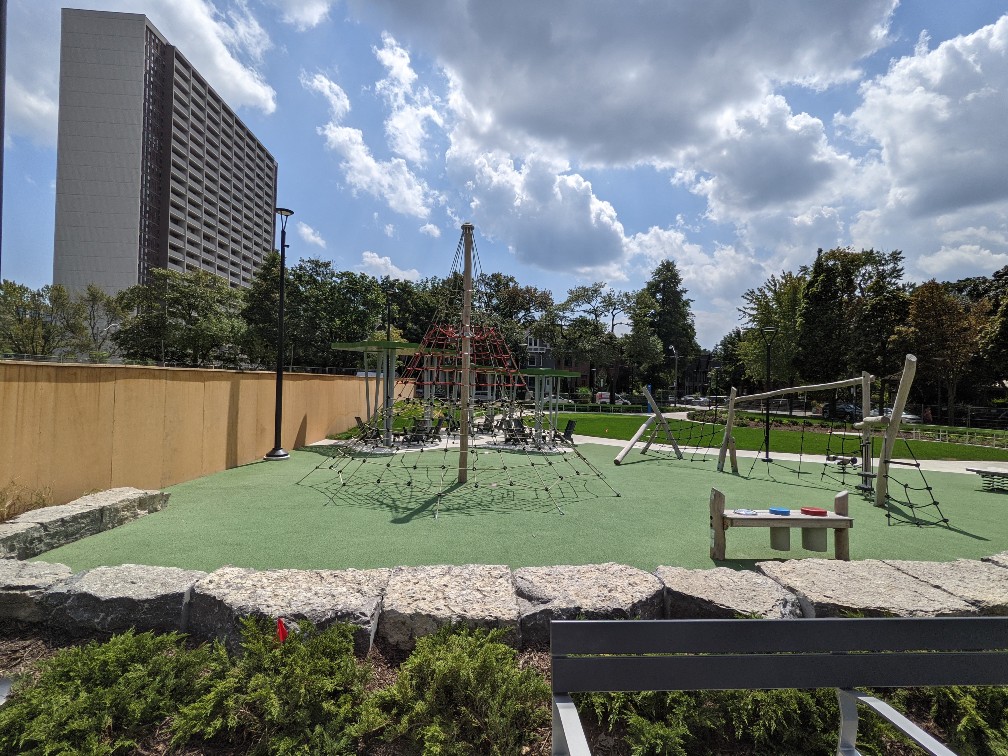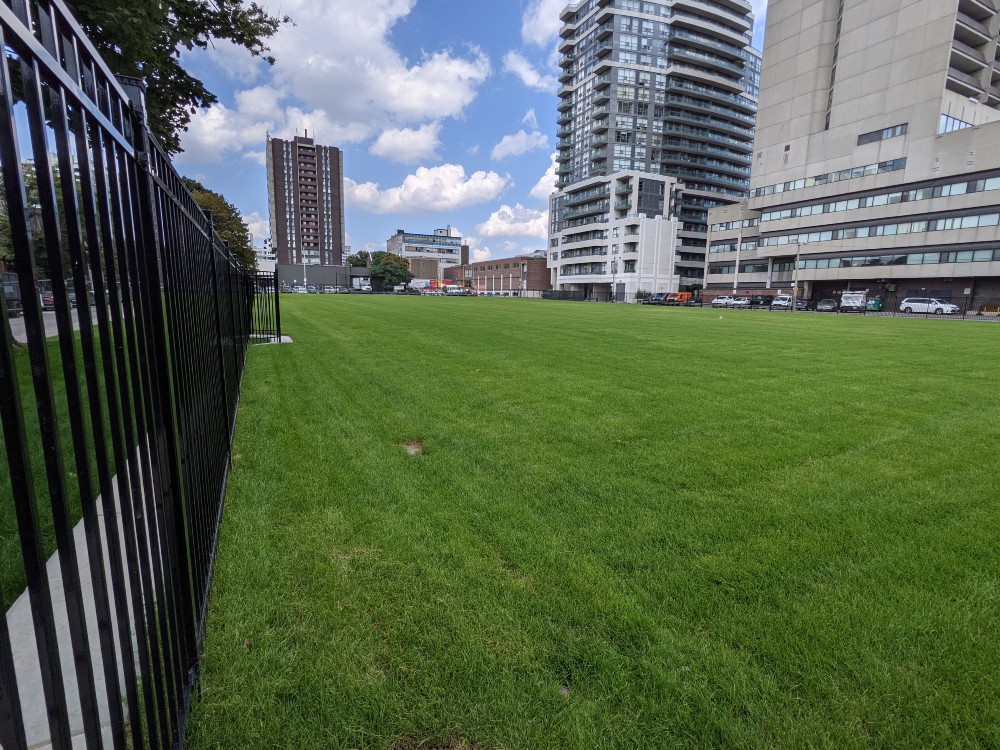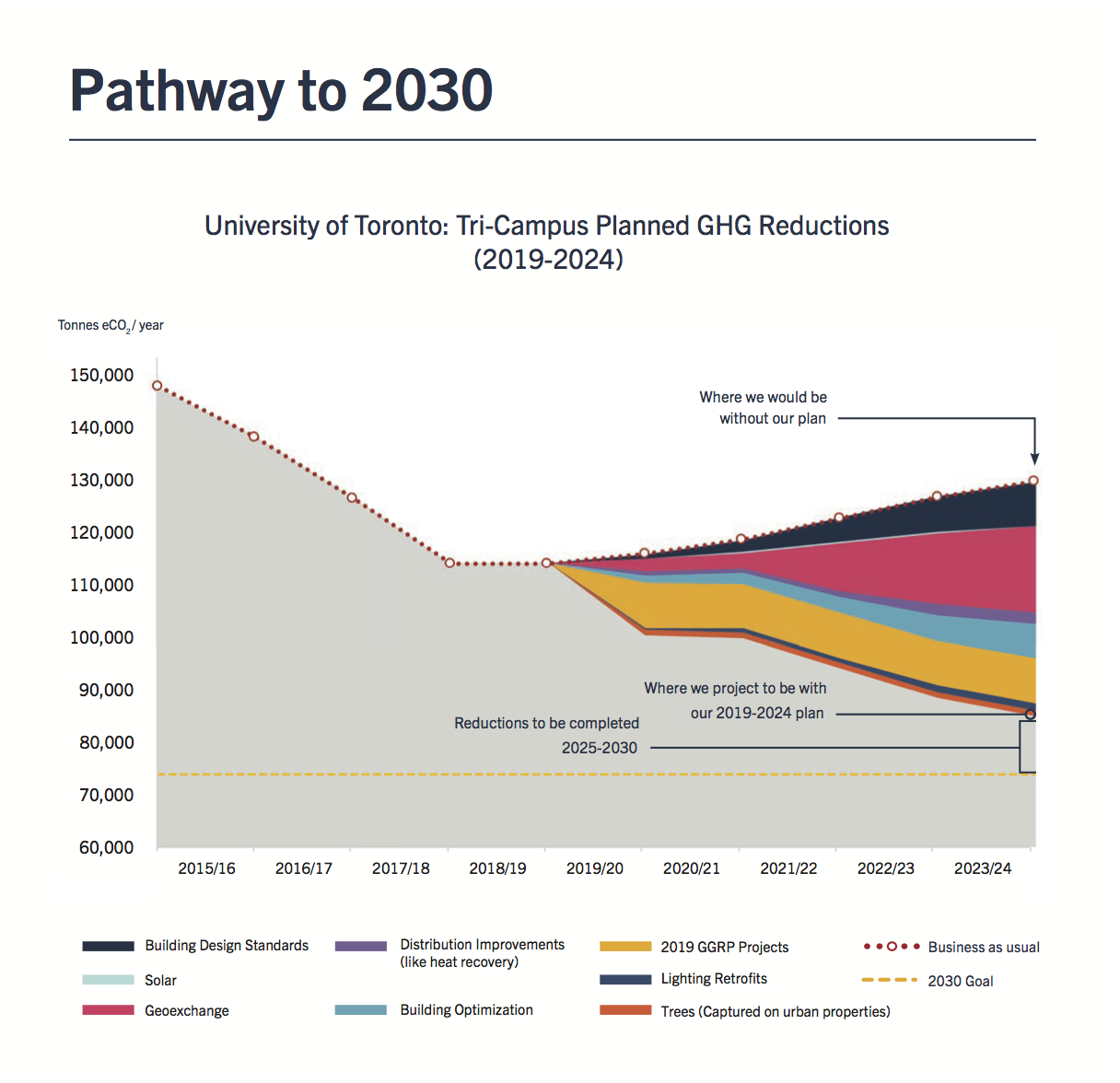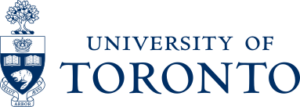Here you’ll find important updates about the project’s progress.
Clockwise from Top: Rendering of community area – Credit: STUDIO tla; Photos: Demolition of the WB MacMurray Field House building, the hard courts and the ice rink (March to mid-May 2020)
What to expect: Spring 2021
Now that the geoexchange system work has been completed, you’ll see the new community area and revitalized playing field begin to take shape. Featuring a winding path, grassy areas with seasonal plantings, and seating, the community area will be a space all members of the Harbord Village Community and surrounding neighbourhoods can enjoy. Read more about the project’s progress below.
Questions?
Please contact Sonia Groh, Project Manager, Project Management, University of Toronto, sonia.groh@utoronto.ca.
PROJECT PROGRESS

August 27, 2021: Looking south at the community area from the northeast corner of the community area.

August 27, 2021: Looking northeast at the playing field from the southwest corner of the playing field.
Current updates
Posted: October 8
On Tuesday October 12, the fast fencing system that currently encloses the playground and community area will be removed. Following its removal, we invite all of our community members to make use of the revitalized space. The tree protection fencing that surrounds the trees will also be removed at this time. We would like to thank our community members for their patience and understanding during our construction efforts and upgrades. We hope you enjoy the new playground and community area!
View our April Community newsletter.
View our March Community newsletter.
View our January Community newsletter.
View our December Community newsletter.
View our November Community newsletter.
View our October Community newsletter.
To learn more about other upcoming developments on St. George campus, please visit the Landmark Project website.
Community Archive
Archive – Community Updates available here.
ABOUT THE PROJECT
-
This University of Toronto project involves three components:
- revitalizing the playing field
- creating a new community area, located at Robert Street and Sussex Avenue
- installing a geoexchange system below the field
-
The University is incorporating a dedicated community space at the corner of Robert Street and Sussex Ave, adjacent to the revitalized playing field. This community area is intended to be a multi-use greenspace for all ages to enjoy. Landscaping highlights include seasonal plantings and a butterfly garden.
-
The geoexchange system to be installed beneath Robert Street Field will play a significant role in reducing the University’s carbon footprint, and will help us meet the ambitious carbon reduction targets of the University Climate Change Coalition, City of Toronto, and province of Ontario.
-
Geoexchange (often referred to as geothermal) technology uses the natural heating and cooling properties of the earth to regulate temperature in surrounding buildings connected to the system.
The geoexchange system is a closed loop that consists of a series of deep pipes filled with clean, circulating water. In the winter, ground heat is transferred and distributed for building heating. In the summer, the process is reversed for building cooling.
-
U of T joined the University Climate Change Coalition (UC3) in 2018. This group of leading research universities in North America committed to reducing greenhouse gas (GHG) emissions on their own campuses and in their communities. In line with the UC3 commitment, the University set a goal to reduce GHG emissions 37 per cent by 2030, below a 1990 baseline level.
For more details about the University’s Low Carbon Action plan, visit uoft.me/LowCarbon19 or contact the Sustainability Office, St. George campus by email: sustainability@utoronto.ca.
-
We have launched a five-year plan (2019-2024) to implement carbon reduction strategies across our three campuses. Emission reduction targets and projects outlined in the plan are aligned with municipal and regional goals, such as TransformTO.
The following graph outlines our planned greenhouse gas reductions over the period 2019 to 2024. As you can see, geoexchange projects form a significant part of this strategy. Collectively, geoexchange projects across our three campuses aim to reduce GHG emissions by 16,465 tonnes eCO2/year. Combined with energy recovery, high performance building designs, and the optimization of existing facilities, these low-carbon solutions will guide us to meeting our target. Our operations staff are also collaborating with U of T’s world-class researchers to develop new methods of capturing carbon to convert CO2 into useable feedstock.
For more details about the University’s Low Carbon Action plan, visit uoft.me/LowCarbon19 or contact the Sustainability Office, St. George campus by email: sustainability@utoronto.ca
Reducing U of T’s Footprint: U of T’s Planned Greenhouse Gas Reductions, 2019-24
2019 START OF PLAN: 114,265 tonnes
2024 WHERE WE PROJECT TO BE: 85,223 tonnes
2030 GOAL: 73,684 tonnes

PROJECT TIMELINE
Spring 2019: Public consultation process to guide design of the community area.
February 2020: Community information session to follow up on consultation and prepare for construction phase.
March – mid-May 2020: Demolition of the WB MacMurray Field House building, the hard courts and the ice rink.
July 2020: Initial project completion date. Unforeseen construction and procurement delays due to COVID-19 pandemic extended project timeline.
July 7, 2020: 153 boreholes installed at Robert Street Field, completing the borehole installation stage of the project.
July 14 – 31, 2020: Removal of the existing residential basement foundations, located along the western side of the Robert Street Field property.
August 3, 2020: Excavation to create trenches to lay the geothermal lateral piping.
August 10 – September 2020: Installation of the geothermal lateral piping system and installation of site services, including a cistern for the irrigation system of the playing field and access manholes.
September 17 – December 2020: Landscaping work on the playing field and the community area.
September 30, 2020: Completion of the installation of the geoexchange lateral piping up to the termination point on the playing field.
October 5 – mid-October 2020: Installation of below-grade electrical service lines for the community area lighting and emergency code blue station. Installation of drainage lines within the community area.
October 23, 2020: Expected completion of drainage lines for the length of the playing field.
October-November 2020: Testing of geoexchange system prior to capping.
Late December 2020: Expected completion of all hard landscaping elements at Robert Street Field.
Mid-January 2021: Installation of shade structures in the community area of Robert Street Field. (*Now updated to begin December 2020.)
Mid-February 2021: Installation of benches in the community area of Robert Street Field.
April to June 2021: Completion of the landscaping work in the playing field and community area.
